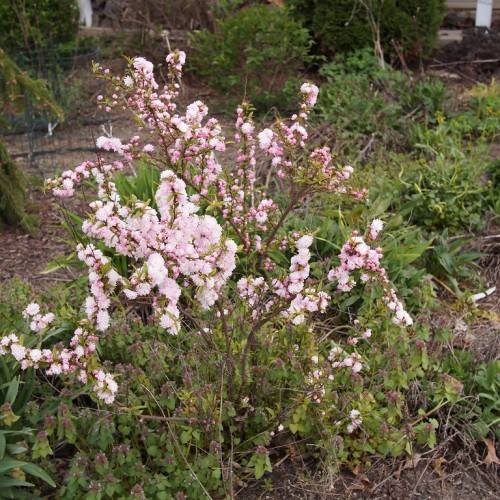
Chinese plum
Prunus glandulosa
Cycle:
Perennial
Watering:
Average
Hardiness Zone:
4 - 8
Flowers:
Flowers In Spring
Sun:
Full sun,part shade
Fruits:
Fruits Ready In Spring
Edible:
Yes
Leaf:
Yes
Growth Rate:
Low
Maintenance:
Low
Drought Tolerant:
Yes
Salt Tolerant:
Yes
Thorny:
Yes
Invasive:
Yes
Care Level:
Medium
watering
Chinese plum (Prunus glandulosa) should be watered regularly but not too frequently. It needs at least 1-2 inches of water a week during the growing season - usually about once a week. During the fall and winter when the plant is dormant, it should only be given water every 2 to 3 weeks. The soil should be check first for moisture; if it is dry, then the plant should be watered. Water at the base of the plant, and avoid wetting the leaves if possible. Make sure the plant is getting drainage by not over-watering it.
sunlight
Chinese plums need at least 5 hours of direct sunlight per day to meet their light requirements. Full sun is the best, but some shade is acceptable, especially during the hottest parts of the day. In the northern parts of its range, the Chinese plum tree may need more sun to thrive while in the south, it may need protection from the intense heat. To ensure the tree gets enough light throughout the growing season, a location receiving morning sun and afternoon shade is ideal.
pruning
Pruning Chinese plum (Prunus glandulosa) should take place in early spring, before new growth begins. Dead, broken, or diseased branches should be removed first. Then, lightly prune healthy branches to improve their structure and thin out overcrowded areas. Depending on the desired shape, more vigorous pruning can be done to encourage branching or to reduce the overall size of the plant. Keep in mind that this species blooms in early spring, so pruned branches may forego flowers if pruned after blooms begin to develop.
